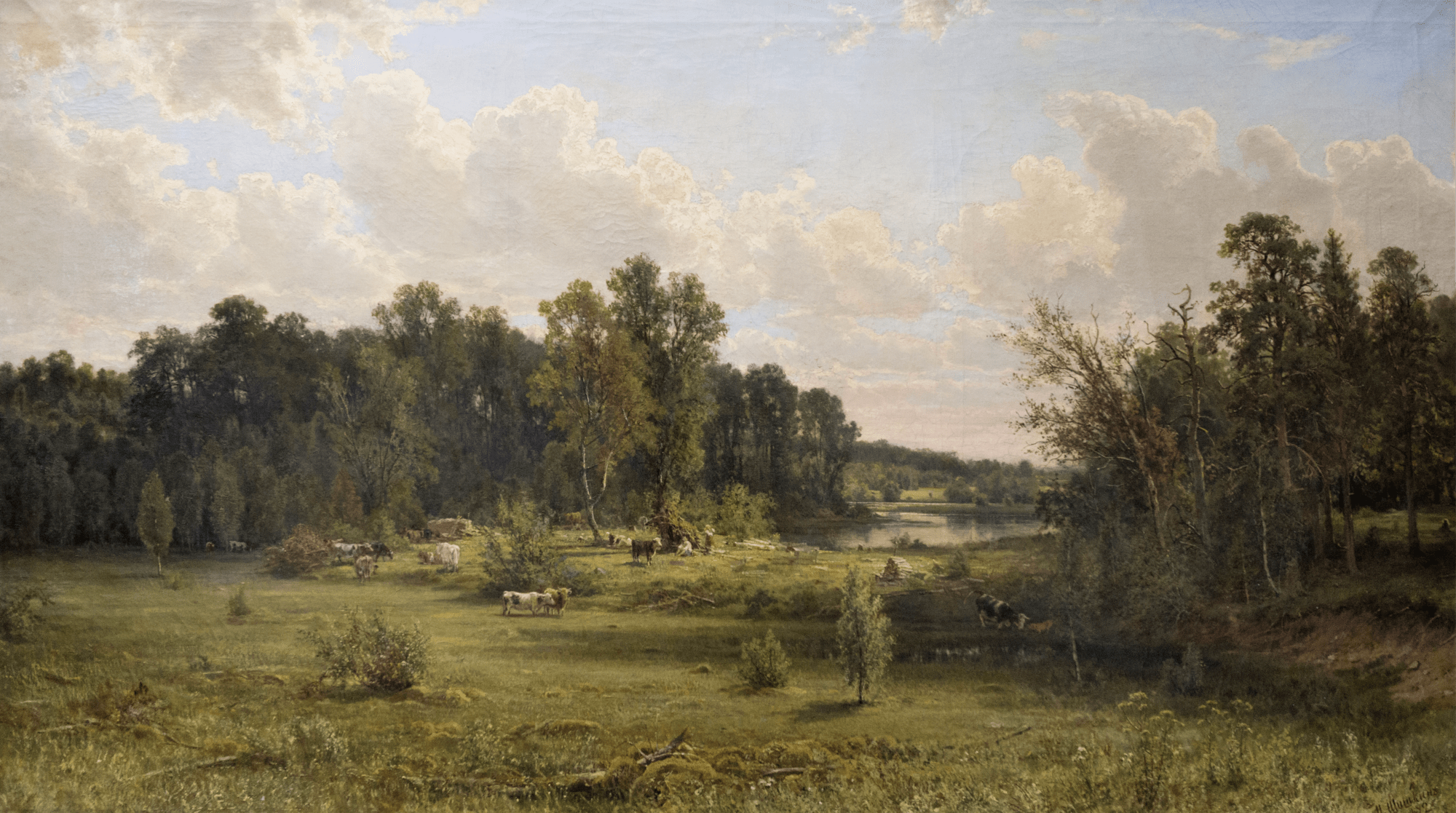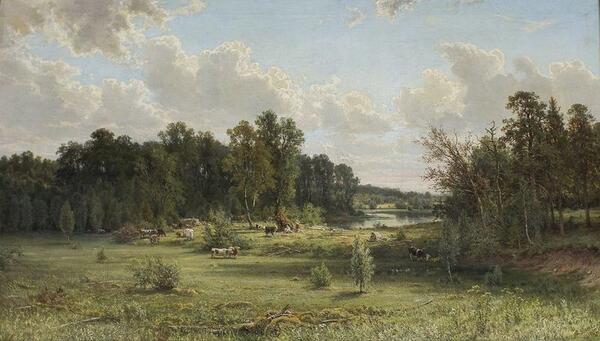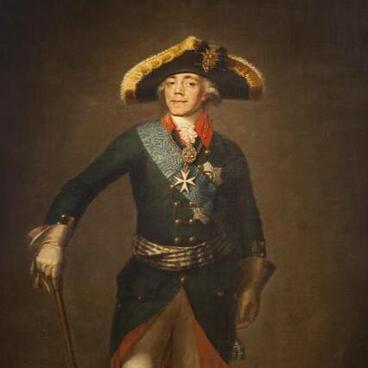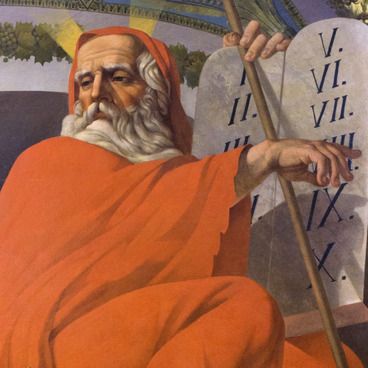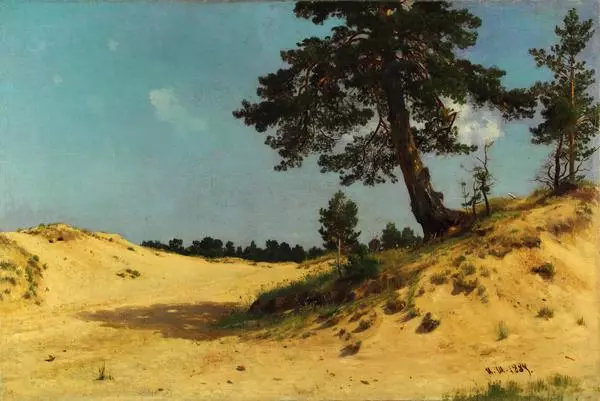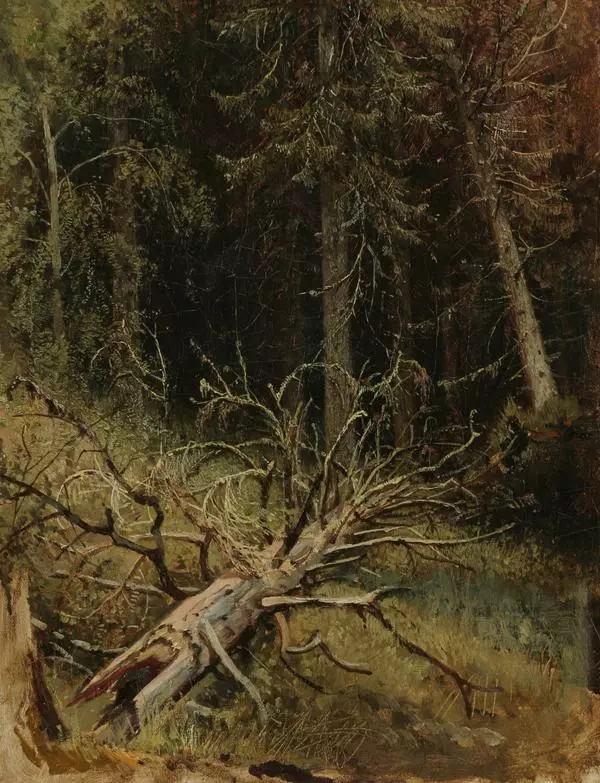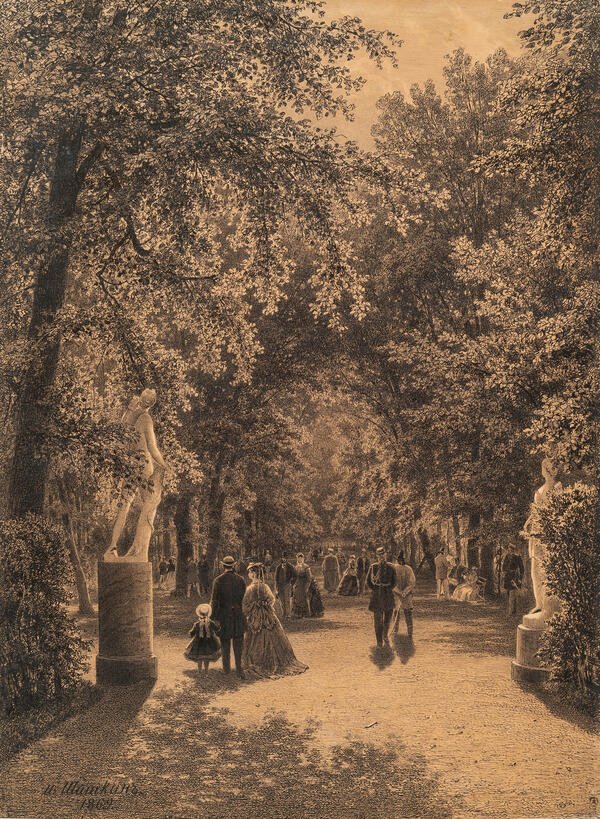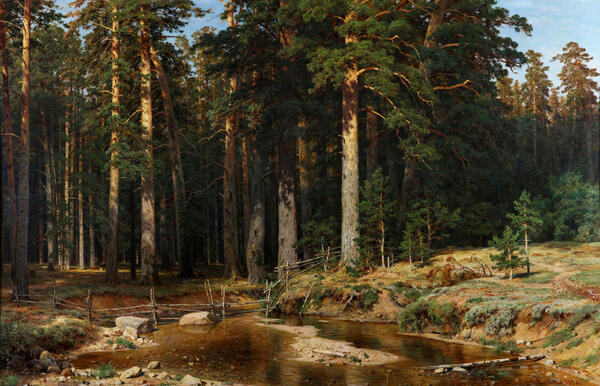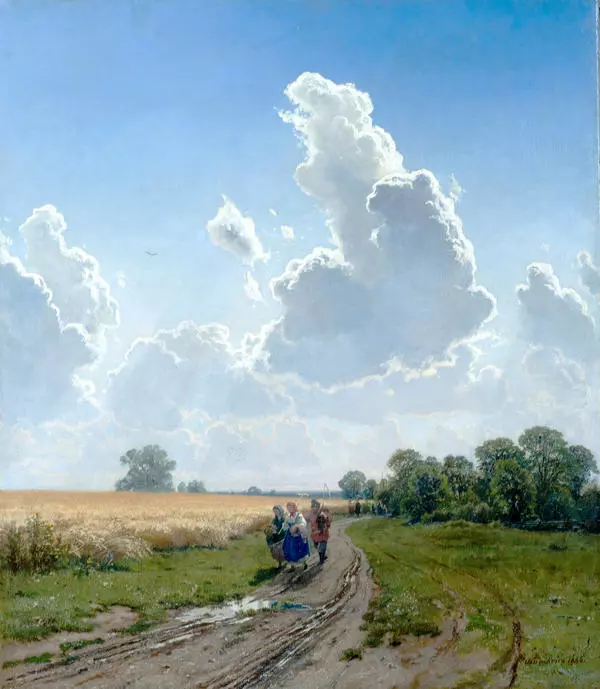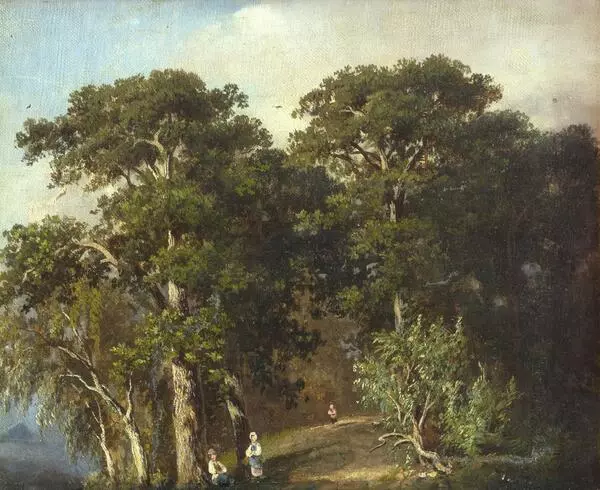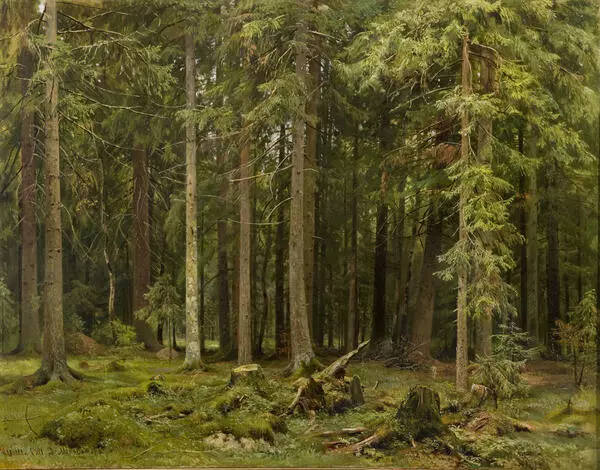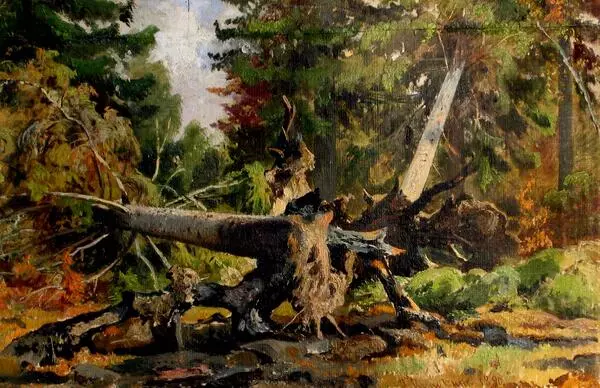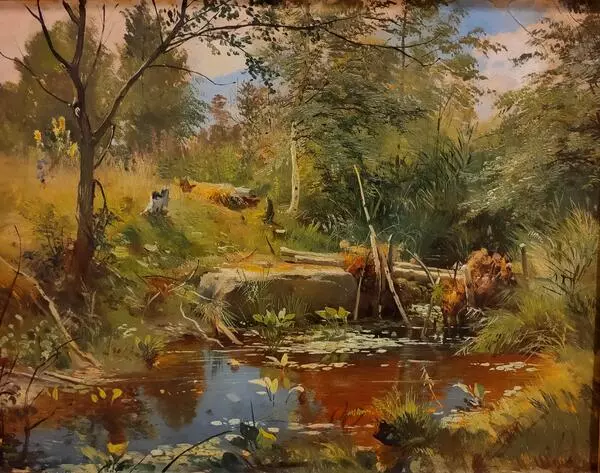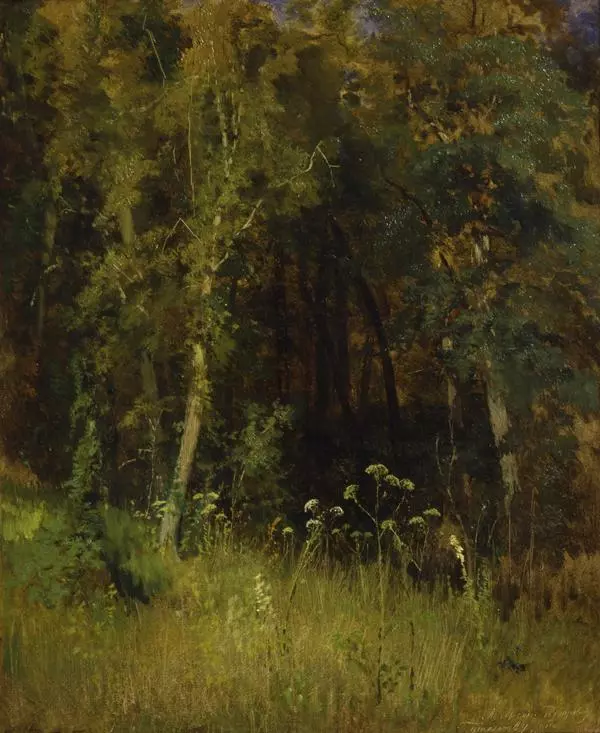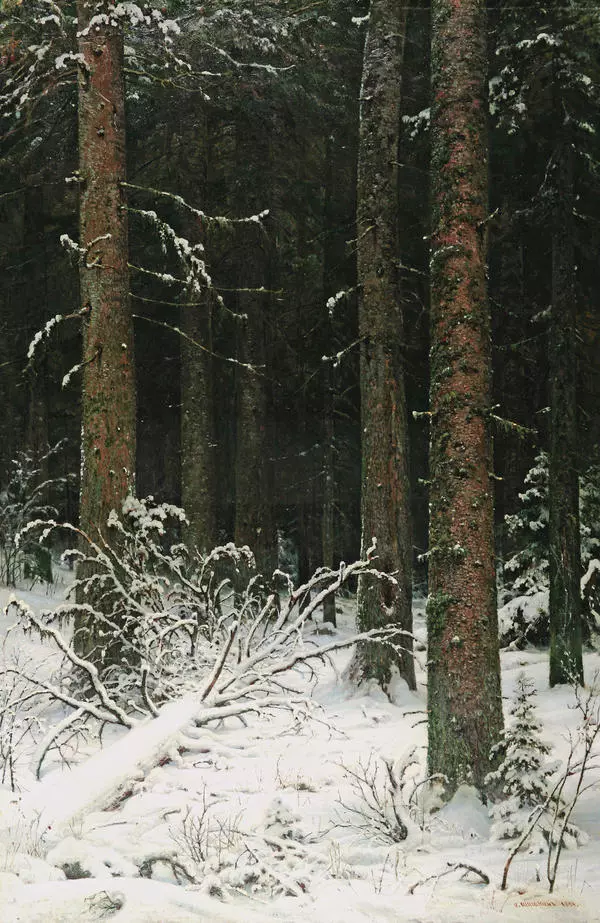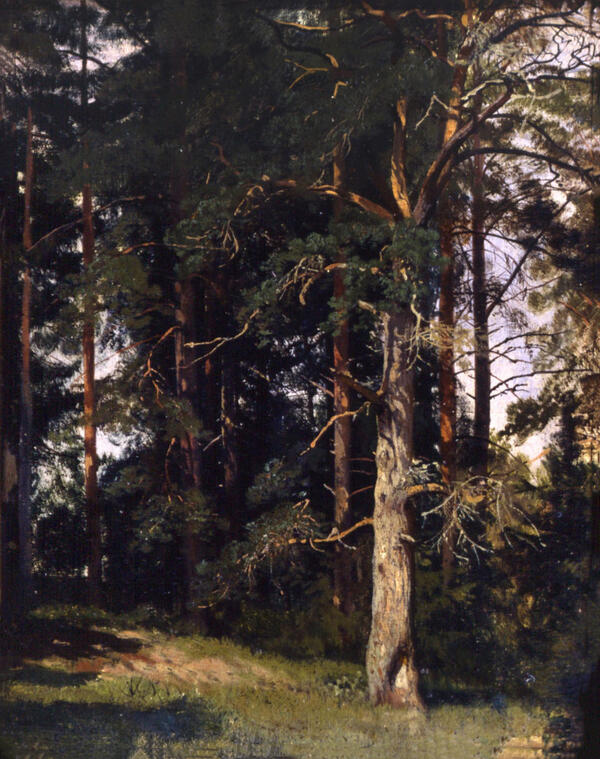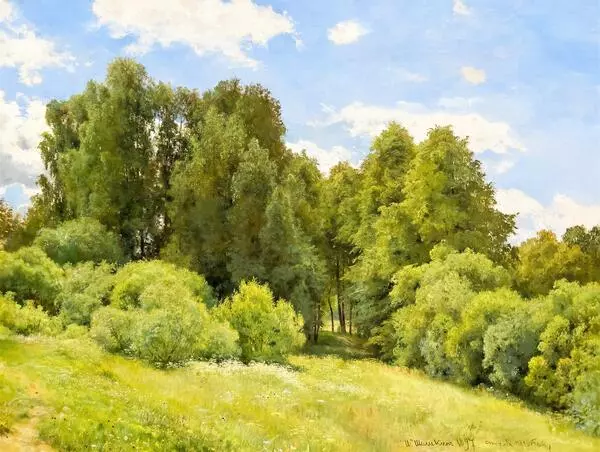Ivan Shishkin, one of the most popular Russian painters, was born in the Vyatka governorate, which was famous for its beautiful pine forests. All his life, the artist paid special attention to the beauty of Russian nature, especially the beauty of coniferous forests. In 1860, he graduated from the Academy of Arts with a major Gold medal and went to Europe. After returning to Russia, he was awarded the title of academician. In the 1870s, Shishkin became very close to the Itinerants and became one of the founders of the Association of Traveling Art Exhibitions.
In his canvases, nature is depicted in all its grandeur and diversity. Shishkin’s paintings have an epic scale, but at the same time, they are extremely realistic. The artist’s landscapes are true-to-life, he does not perceive nature with the delight and enthusiasm of a romantic, but rather undertakes a calm, thoughtful study.
As far as the size is concerned, the painting ‘Copse. Noon’ is one of his largest canvases. This is the artist’s most significant early work. The painting depicts a meadow surrounded by a copse and a herd grazing nearby. A simple scene from peasant life distract attention from the epic scale of nature. In his book “The Destiny of Treasures”, the former director of the Irkutsk Museum Alexei Fatyanov described this painting as follows,
In his canvases, nature is depicted in all its grandeur and diversity. Shishkin’s paintings have an epic scale, but at the same time, they are extremely realistic. The artist’s landscapes are true-to-life, he does not perceive nature with the delight and enthusiasm of a romantic, but rather undertakes a calm, thoughtful study.
As far as the size is concerned, the painting ‘Copse. Noon’ is one of his largest canvases. This is the artist’s most significant early work. The painting depicts a meadow surrounded by a copse and a herd grazing nearby. A simple scene from peasant life distract attention from the epic scale of nature. In his book “The Destiny of Treasures”, the former director of the Irkutsk Museum Alexei Fatyanov described this painting as follows,
